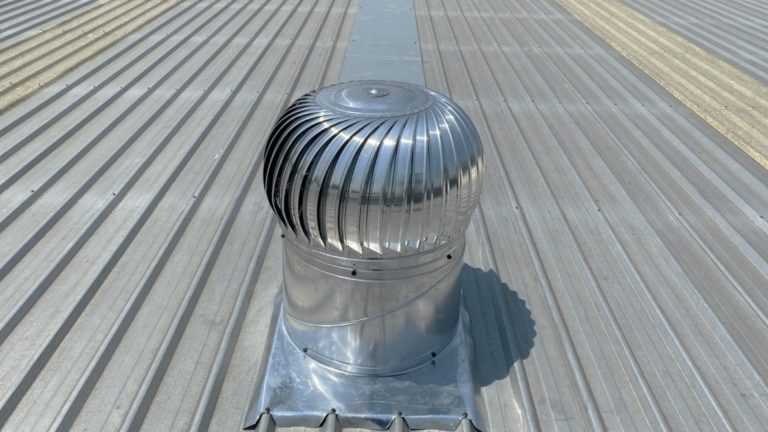The Importance of Roof Ventilation in Australia: A Comprehensive Guide on Available Solutions and Best Practices

Rain Heads Custom Made Shipped Free Australia Wide – Click Here >
Dambuster Rain Heads Shipped Free Australia Wide – Click Here >
Commercial Industrial Roof Vents 300mm-950mm – Click Here >
Eco-Friendly Roofing Insulation Shipped Free – Click Here >
Gutter Sumps Shipped Free Australia Wide – Click Here >
Australia’s varying climate conditions, spanning from tropical regions in the north to temperate zones in the south, make home ventilation a critical topic of interest. While many homeowners focus on windows and doors to regulate airflow, the significance of proper roof ventilation often remains overlooked. This article aims to shed light on the importance of effective roof ventilation, discussing options such as stretch roof vent installations, Ampelite roof vent suppliers, turbine roof vents, and more. Specifically, we’ll delve into key solutions available in Australia, and focus on options best suited for Melbourne’s climate.
Why is Roof Ventilation Important?
Inadequate roof ventilation can lead to a host of problems like heat buildup, moisture accumulation, and even structural damage to your property. According to the Australian Building Codes Board (ABCB), proper ventilation systems are vital for maintaining indoor air quality and temperature (Australian Building Codes Board, National Construction Code, 2019). In Melbourne, where temperatures can fluctuate significantly, ensuring optimal roof ventilation becomes even more critical. Research from CSIRO indicates that proper roof ventilation can reduce your energy costs by as much as 30% (CSIRO, Energy Efficiency Research, 2015).
Types of Roof Vents
Stretch Roof Vent Installation
Stretch roof vents are a cutting-edge solution that offer flexibility and adaptability. They can expand and contract to fit various roof sizes, thereby offering a custom solution for each home. Companies like Ampelite are recognized suppliers of these types of vents. Their products comply with the Australian Standard AS 4740:2000, ensuring durability and optimal performance.
Turbine Roof Vents
Commonly used in industrial settings but increasingly popular in residential homes, turbine roof vents operate by harnessing wind energy to pull hot air out of your attic space. Reviews often highlight their efficiency and cost-effectiveness, particularly in windy regions.
Static Vents for Roofing
Static vents have no moving parts but rely on natural convection to move hot air and moisture out of the attic. Though less efficient than turbine vents, they are easy to install and are an affordable option for many homeowners.
Stainless Steel Roof Vents
For those who prioritize durability and long-lasting performance, stainless steel roof vents are an excellent choice. They are corrosion-resistant and often come with extended warranties.
Mini Roof Vents
Mini roof vents are a compact solution often used in Australia for smaller attic spaces or as supplementary systems. Despite their small size, they can significantly improve airflow and reduce moisture.
Factors to Consider
Climate Zone
Different states and territories in Australia have unique climate conditions that influence the choice of roof vents. For instance, turbine roof vents are highly effective in South Australia where wind speeds are generally higher. In contrast, static vents for roofing are often recommended in Tasmania, which has a more temperate climate.
Material Durability
Stainless steel roof vents are highly durable and are especially recommended for coastal areas like Queensland where saltwater corrosion is a concern.
Installation
The complexity of installation varies depending on the type of vent chosen. Stretch roof vents usually require professional installation but offer the advantage of a custom fit.
Roof Ventilation Solutions in Melbourne
Given Melbourne’s highly variable climate, a combination of vent types is often recommended. Suppliers such as Ampelite offer a range of solutions tailored to Melbourne’s specific needs. Reviews from local customers suggest that a mix of stretch roof vents and static vents provides the best results for most homes in this region.
Supplier Considerations
When choosing a supplier, ensure that they comply with Australian Standards and preferably have a proven track record in your state or territory. Ampelite, for instance, is an established name in the industry and offers a range of compliant and high-quality products.
Final Thoughts
Roof ventilation is an essential yet frequently neglected aspect of home maintenance in Australia. From stretch roof vents supplied by companies like Ampelite to turbine roof vents and static options, the market offers a diverse range of solutions designed to meet varying climate and housing needs. In Melbourne, a strategic combination of different vent types can offer the most effective and energy-efficient solution.
By making informed decisions based on your specific needs and local climate, you not only improve the comfort of your living space but also prolong the lifespan of your home and reduce energy costs. Don’t overlook this critical aspect of your home’s health; take steps to ventilate your roof adequately today.
References
- Australian Building Codes Board. National Construction Code, 2019. Canberra, ACT: ABCB.
- CSIRO. Energy Efficiency Research, 2015. Clayton, VIC: CSIRO.
- Australian Standard AS 4740:2000. Roof Ventilation Requirements. Sydney, NSW: Standards Australia.
Disclaimer: While every effort has been made to provide accurate and up-to-date information, this article is meant for educational purposes and should not replace professional advice.

